Portnard
Houses within 10km of this house
Displaying 41 houses.
Houses within 10km of Portnard
Displaying 41 houses.
| House name | Description | |
|---|---|---|
| Ballyvorheen | Occupied by Edmond Bourke in 1814, by T. Holland in 1837 and William F. Holland at the time of Griffith's Valuation who held the property from Thomas Lloyd. The buildings were valued at £25. | |
| Linfield | This house was the residence of Darby O'Grady in 1837 and the early 1850s. He held it from the Lloyd Apjohn family who subsequently lived in it. Sold by the Lloyd Apjohns following the death of Michael Marshall Lloyd Apjohn in 1895. This house was a ruin until recently renovated and is now inhabited. |

|
| Ashroe | The Ordnance Survey Name Books record the building of Ashroe House in 1770 for £850. The residence of the Evans family in the late 18th and 19th century, held from Sir Matthew Barrington at the time of Griffith's Valuation, when it was valued at £23+. Wilson mentions it as the seat of Mr. Evans in 1786. The National Inventory of Architectural Heritage suggests modifications were made to the house during the nineteenth century. It is still extant and well-maintained. |

|
| Clonshavoy | Located on the Barrington estate this house was occupied by Caleb Powell and valued at £15 at the time of Griffith's Valuation. Bence Jones describes Clonshavoy as a single storey early 19th century house in the "cottage" style. In the 20th century it was the home of the last Barrington to live in the Limerick area. The Irish Tourist Association surveyor writes in 1944 that the house was interesting as it was the remains of a very old Elizabethan house. He says that more than half the house was pulled down as it was unsafe "and the present eastern wing is a reconstruction". This house is still extant. |

|
| Glenstal | Described by Bence Jones as a "massive Norman-Revival castle", built for the Barrington family. The building began in 1837 but was not completed until the 1880s. Noted by Slater as the seat of Sir Charles Burton Barrington in 1894. The buildings were valued at £65 in the early 1850s and at £58 in 1906. Now known as Glenstal Abbey, it is a boys' boarding school run by the Benedictine monks, who bought the property from the Barringtons in 1927. |

|
| Towerhill | This property was the original residence of the Lloyd family where they settled in the 17th century. It passed to William, second son of Reverend Thomas Lloyd of Towerhill. Occupied by William's son, Reverend Rickard Lloyd, in 1814. The buildings were valued at £31 at the time of Griffith's Valuation when William Lloyd was the occupier. The property was held from the Stafford O'Briens. Purchased by the Devanes at the end of the 19th century, the house is now in ruins. |
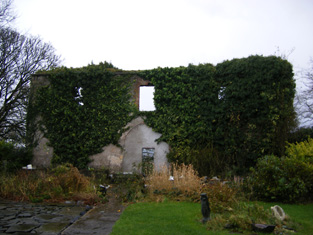
|
| Abington House | Abington House in the townland of Dromeliagh is marked on the first Ordnance Survey map. In 1786 Wilson states "at Abingdon, is a very pleasant seat of Sir Nicholas Lawless". At the time of Griffith's Valuation a house valued at £17 was occupied by Michael Apjohn in this townland. In the 1860s this house was occupied by John Connell Fitzgerald and his wife Margaret (Apjohn). ''The Limerick Chronicle'' of 1 Oct 1872 records the death of Mary Anne Apjohn of Abington House, widow of Michael Apjohn. The property was held from Lord Cloncurry. A ruined house is still extant at the site. |
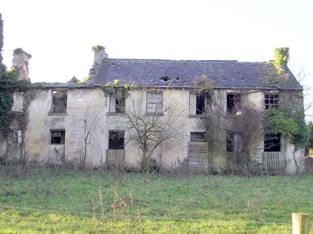
|
| Farnane House | Located on the Cloncurry estate Farnane was the home of the Costelloe family from at least 1837. Occupied by Thomas Costelloe in the early 1850s and valued at £12+. It is labelled Farnane House on the 1st edition Ordnance Survey map but is not labelled on the later 25-inch edition of the 1890s. It is no longer extant. | |
| Wilton | In 1786 Wilson refers to Wilton-Hall as the seat of Mr. Perceval. A house labelled Wilton is shown on the 1st edition Ordnance Survey map. It was occupied by George Duhy at the time of Griffith's Valuation, valued at £14 and held from Lord Cloncurry. On the 25-inch map of the 1890s this property is labelled Wilton Constabulary Barracks. It is no longer extant. | |
| Eyon | The Ordnance Survey Name Book records this house as costing £500 to build in 1838 when it became the seat of Mr Richard Laffan. The house valued at £12+ at the time of Griffith's Valuation, was occupied by Richard Laffan, a dairy farmer. Laffan held the property from Edward B. Hartopp. ''Burke's Irish Family Records'' records Edward Lloyd of Eyon in the mid 18th century. | |
| Ballyvorneen | This house is marked on the first edition Ordnance Survey map at the site of a castle. Described as a "dairyman's house" at the time of Griffith's Valuation and held by William and Thomas Gabbett, younger brothers of Joseph Gabbett of High Park, in fee. The buildings were valued at £15. The house no longer exists. |

|
| Boskill | Lewis records B. Friend residing at Baskill in 1837. The Ordnance Survey Field Name Book records two houses. Boskill House the original residence of the Frends dating back to the 17th century and located at the northern point of the townland. It was at the end of the 1830s a thatched house which had been converted into a stable. Boskill Lodge (marked on the first Ordnance Survey map as Boskill House) was built in 1800 by Captain Benjamin Frend, at a cost of about £600. At the time of Griffith's Valuation Benjamin Friend junior occupied this house which was valued at £18. In 1906 a mansion house in the townland of Templemichael valued at £30.15 shillings was the residence of Edith M. Minchin and Agnes E. Rose. The Frends and the Roses of Ardhu House were related. The Irish Tourist Association surveyor in 1942 records the burning of this house in the Civil War and that there was "no trace of the house now". | |
| Lombardstown | The Ordnance Survey Field Name Book states that this house was rebuilt in 1823 by the occupier Thomas O'Brien. It was still occupied by Thomas O'Brien in the early 1850s. The buildings were valued at £11 and the property held from Lady Charlotte Wolfe. | |
| Maddyboy | Occupied by John Burke in 1814, by Captain Wickham in 1837 and by Benjamin Lucas in the early 1850s. The buildings were valued at £14 and the property held from John Lucas. | |
| Dromkeen | In the early 1850s John Hussey de Burgh lived in this house, situated near the old home of the Burgh family, also named Dromkeen. He held the property in fee. The buildings were valued at £19+. By 1906 Dromkeen was valued at £10. | |
| Dromkeen House | Fitzgerald refers to the old mansion of the Burghs as standing opposite the old walls of a church. Lewis refers to Dromkeen as "formerly the residence of the Burgh family" then occupied by the Reverend M. Lloyd, and that "the remains of the ancient mansion show it to have been an extensive and important establishment". A house at this site was occupied by Henry Croker at the time of Griffith's Valuation and valued at £34. It was held from Robert Smithwick. The Ordnance Survey Name Book refers to this house as William's Fort and states that it first belonged to the Burgh family and was rebuilt in 1820. Valued at £17 in 1906 and occupied by Digby H. De Burgh. |

|
| Mountsion | Occupied by Robert Bradshaw in 1814 and by Helenus White in the early 1850s. The buildings were valued at almost £9 and were held in fee. | |
| River Ville [Mulkear] | Built circa 1800 and the seat of Arnold Hill circa 1840 this house was occupied by Samuel F. Dickson at the time of Griffith's Valuation and held by him from William D. Farrer with 206 acres, The buildings were valued at almost £16.The house is labelled River Ville on the 1st edition Ordnance Survey map but as Mulkear on the 25-inch edition of the 1890s. A house is still extant at the site. | |
| Mount Catherine | A house on the Lloyd Apjohn estate, the home of the Smithwick family from about the mid 18th century and occupied by Michael Smithwick in the early 1850s, when the house was valued at £24. The Smithwicks of Mount Catherine and the Lloyd Apjohns were related through at least one marriage. |

|
| Sunville | Sun-Ville, Pallas-Green was the residence of Thomas Apjohn at the end of the 18th century and of John Ryan esquire in 1814. In the early 1850s it was occupied by Thomas Kearney and held from Michael Apjohn. The buildings were valued at £33. Thomas Kearney was County Surveyor for the East Riding of county Limerick, 1837-1862 and for Limerick city 1852-1853. His daughter Olivia married in 1854 Michael Marshall Lloyd Apjohn of Linfield. see http://www.dia.ie/architects/view/2903. It is still extant. |

|
| Landscape | The Reverend M. Lloyd Apjohn was the occupier of this house at the time of Griffith's Valuation. He held it in fee and it was valued at £21. The original house is not extant and a modern building has been constructed at the site in this century. | |
| Pallas House | At the time of Griffith's Valuation this house was occupied by Thomas Apjohn who held the property from the Trustees of E. Smith's Charities. The National Inventory of Architectural Heritage suggests it was constructed in the 1790s. The building is still extant. |
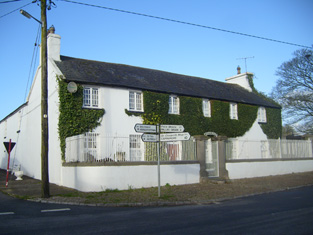
|
| Castle Garde | The seat of Hugh M. O'Grady at the time of Griffith's Valuation, held by him in fee. Powell writes in his list of Jurors that it was built by Hugh's father the Honourable Waller O'Grady circa 1830. Valued at £38 in 1906. It is still extant. |
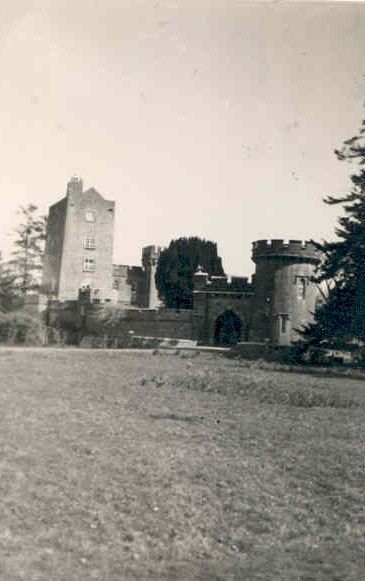
|
| Kilmoylan | The home of Richard White in 1814 and of Newport White in the early 1850s, held from the representatives of D. Barrington. The buildings were valued at almost £18. It is no longer extant. | |
| Toomaline House | The Ordnance Survey Field Name Book refers to the building of this house by the Marshalls in 1829 and that it was the seat of William Bennet in 1839. "It is of a decayed appearance owing to the decease of the proprietor". The home of Mrs Marshall in 1837 and of Lawrence Marshall in the early 1850s, valued at £16 and held from the representatives of D. Barrington. It is still extant and occupied. |

|
| Bilboa Court | Built in the last decade of the 17th century by the Reverend Dean Story. It was later occupied by Colonel Wilson. Lewis refers to Bilboa House as the property of the Earl of Stradbroke. It was "nearly in ruins", was built "wholly of brick from Holland" and was formerly the residence of Colonel Wilson. Circa 1840 the Ordnance Survey Name Book records a three-storey ruin with about 40 windows which had been falling into decay since about the 1770s. |
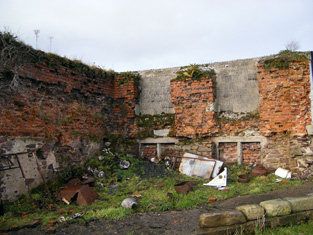
|
| Cappercullen | Tierney writes that Lord Carbery built this house in 1717. It was inhabited by the Grady family in the latter half of the 18th century and Wilson refers to it as their seat in 1786. It was in ruins by the time of the first Ordnance Survey. The site of this house is now the tennis court at Glenstal. | |
| Clonkeen House (Barrington) | Croker Barrington, second son of Sir Croker Barrington, was the occupant of a mansion house at Clonkeen (Barrington) in 1906, valued at £48. The Barringtons owned a house in this area at the time of Griffith's Valuation which was valued at almost £10. This older property is known as Clonkeen House and was enlarged later in the nineteenth century. The 25-inch Ordnance Survey Map of the 1890s shows a second property, labelled Barrington's Bridge House [R683547]. This latter property is locally known as The Red House. Houses are still extant at both sites. Clonkeen House was offered for sale in 2013. |

|
| Mount Rivers | The seat of the Phillips family, occupied by Richard Philips in the first half of the 19th century and held by him in fee. The house was valued at £30 at the time of Griffith's Valuation. The sale rental of 1874 describes Mount Rivers as "a fine modern country mansion in thorough repair" and gives a description of the rooms and out houses. Wyndham Gabbett occupied the mansion house valued at £27 in 1906. In 2013 the property was offered for sale. |

|
| Castle Waller | The seat of the Waller family in the 18th and first half of the 19th century, occupied by Richard Waller in 1814 and in 1837. In 1840 the Ordnance Survey Name Books reported that is was then uninhabited. Thomas Mullowney [possibly the youngest son of Croasddaile Molony] was the occupant at the time of Griffith's Valuation when the buildings were valued at £17. Castle Waller was occupied for sometime in the 1850s by William de Rythre who married Blanche Waller. In the 1870s Michael Moloney of Castle Waller owned 5 acres. The building was in ruins by the early 20th century. | |
| Rockvale | Reverend M. Moore was the proprietor of Rockvale in 1837. In 1840 the Ordnance Survey Name Books note it as the seat of Rev. A. Armstrong and describe it as " a commodious dwelling house". Francis J. O'Neill was the occupier in the early 1850s. He held the house, offices and flour mills, valued at £61 from John F. Waller. A house is still located at this site. | |
| Clonsingle | A house situated on the Tipperary/Limerick county border, occupied by R. Young in 1837 and by Robert Young in the early 1850s, when it was valued at £30 and held in fee. Robert Young was still resident in the 1870s. A house is still located at this site. | |
| Ballymackeogh | The seat of the Ryan family for much of the 18th and 19th centuries, occupied by William Ryan in 1814 and by his son William Ryan in 1837. The Ordnance Survey Name Books refer to the house as the residence of Mr. Hawkshaw in 1840. William Ryan held the property in fee at the time of Griffith's Valuation when the buildings were valued at £31. The Ryans were still resident at the beginning of the 20th century. This house is still extant. | |
| Churchfield House | Dr Langer Carey was a member of the Careyville family. He lived at Churchfield House, Newport in the mid 19th century, valued at £17.10 shillings and held from Lady Waller. A house is still extant at the site. | |
| Bloomfield | In 1786 Wilson writes that Bloomfield Lodge was occupied by Mr. Bloomfield. In 1837 Bloomfield was occupied by Edmund Scully, fifth son of James Scully of Kilfeacle and by Edmund's son, Carbery Scully, in 1840 and at the time of Griffith's Valuation. He held the property from Lady Waller and the buildings were valued at £29. George M. Finch was living at Bloomfield, Newport in the 1870s. Bloomfield is still extant. |

|
| Derryleigh House | Lewis records G. Ryan as resident at Derryleagh Castle in 1837. In 1840 and at the time of Griffith's Valuation Henry Hawkshaw held a house valued at £12+ from Lady Waller at Derryleigh. A building is still located at this site. The Ordnance Survey Name Books record the existence of an old castle in this townland which had been "razed to the ground by Mr. Hawkshaw" some time previously. | |
| Foxhall | In 1786 Wilson refers to Foxhall as the seat of Mr. Anderson. It was the home of a branch of the Rose family in the 19th century following the marriage of Mary Anderson and Richard Rose. Richard A. Rose was resident in 1814 and J. O'Brien in 1837. In 1840 the Orddnance Survey Name Books refer to it as the residence of Dr. Ryordan, " a commodious dwelling house". At the time of Griffith's Valuation W.A. Rose occupied the house valued at £27+ and held in fee. This house is now demolished. | |
| Dromore | Mrs Rebecca Benn held this house valued at £17 in fee in the mid 19th century. The mansion house at Clonbunny was occupied by William B. Cronyn in 1906. The Benns and Cronyns were related. It was valued at £22. |
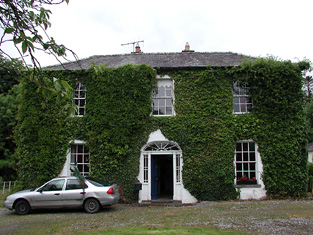
|
| Lackamore Lodge | A late 19th century house valued at £13+ in 1906 and held by the representatives of Robert Heard. This building was located just to the south of a police barrack and is now a ruin. | |
| Cloverfield | In 1786 Wilson mentions a house called Cloverfield three miles beyond Caherconlish as the seat of Mr. Lloyd. A house named Cloverville is marked on the first edition Ordnance Survey map. On later maps a much larger building is marked. At the time of Griffith's Valuation valued at £9.5 shillings was vacant in this townland. Richard Laffan, a dairy farmer, is recorded as the immediate lessor. The National Inventory of Architectural Heritage dates the original building from circa 1830 with later 19th century additions. The house continues to be used as a residence. |

|
| Newport House | In 1786 Wilson refers to a house at Newport which was the seat of Sir Robert Waller. This may be the property labelled "site of Newport House" on the 1st edition Ordnance Survey map. In 1840 the Ordnance Survey Name Books refer to the the site of a house "formerly the residence of the late Sir Robert Waller. It is now nearly altogether taken away". |

